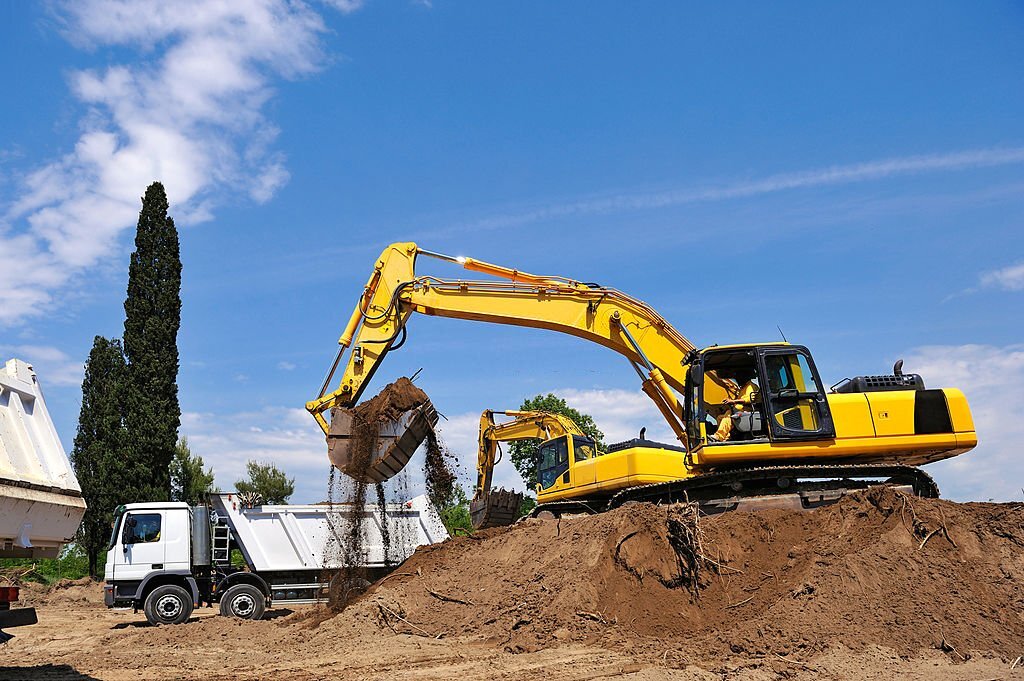
Backhoes are versatile machines extensively used in heavy equipment operations, offering exceptional capabilities for various tasks. Efficient control mechanisms play a vital role in operating backhoes effectively. This article explores the different control mechanisms used in operating backhoes, including hydraulic, mechanical, and electronic controls. By understanding these control systems, operators can navigate backhoes with precision and achieve optimal performance in diverse heavy equipment applications.
I. Hydraulic Controls:
Hydraulic controls are widely utilized in operating backhoes due to their versatility and smooth operation. Hydraulic systems use pressurized fluid to generate and transmit power, enabling operators to control the movement and functions of the backhoe. Hydraulic joysticks or levers are commonly used to manipulate the boom, arm, and bucket movements. Precise control and synchronized operation are achieved by the modulation of hydraulic flow and pressure, allowing operators to perform excavation, loading, and material handling tasks with ease.
II. Mechanical Controls:
Mechanical control mechanisms rely on direct physical linkages and mechanical components to operate backhoes. These controls involve the use of levers, pedals, and switches that are connected to the various components of the backhoe. Mechanical controls offer a more direct and tactile feel, providing operators with a sense of control and responsiveness. While mechanical controls may require more physical effort, they are reliable and effective in providing immediate feedback and maneuverability.
III. Electronic Controls:
Modern backhoes increasingly incorporate electronic control systems, bringing advanced functionalities and automation to the operation of the equipment. Electronic controls utilize sensors, actuators, and electronic interfaces to monitor and control the backhoe’s movements and functions. These controls often feature joysticks or touchscreens that provide operators with intuitive and user-friendly interfaces. Electronic control systems offer precision, programmability, and the ability to store and recall specific settings, enhancing operational efficiency and facilitating integration with other electronic systems.
IV. Advantages of Different Control Mechanisms:
Each control mechanism offers distinct advantages in operating backhoes based on operator preferences and the specific requirements of the task at hand. Hydraulic controls provide smooth and precise movements, offering excellent control over the backhoe’s functions. Mechanical controls offer direct feedback and reliability, allowing operators to feel the equipment’s response physically. Electronic controls bring automation, programmability, and advanced features, optimizing efficiency and simplifying complex operations.
V. Applications and Industry Considerations:
Different control mechanisms find applications in various heavy equipment industries. Hydraulic controls are widely used in construction, landscaping, and agriculture, where smooth operation and precision are crucial. Mechanical controls are commonly found in older or simpler backhoe models, as well as in specialized applications where tactile feedback is preferred. Electronic controls are increasingly prevalent in modern backhoes, providing advanced features for enhanced productivity and integration with other electronic systems.
VI. Operator Training and Safety Considerations:
Operating backhoes effectively requires proper training and understanding of the specific control mechanisms in use. Operators should receive comprehensive training on the operation, maintenance, and safety procedures associated with the control systems. Familiarity with the control layout, ergonomic considerations, and adherence to safety protocols are essential to prevent accidents and maximize operational efficiency.
Conclusion:
Control mechanisms are integral to the effective operation of backhoes in heavy equipment work. Whether utilizing hydraulic, mechanical, or electronic controls, operators have a range of options to suit their preferences and specific task requirements. Each control mechanism offers distinct advantages in terms of precision, responsiveness, or advanced features. By understanding and mastering the control systems, operators can navigate backhoes with ease, ensuring optimal performance, efficiency, and safety in diverse heavy equipment applications.

